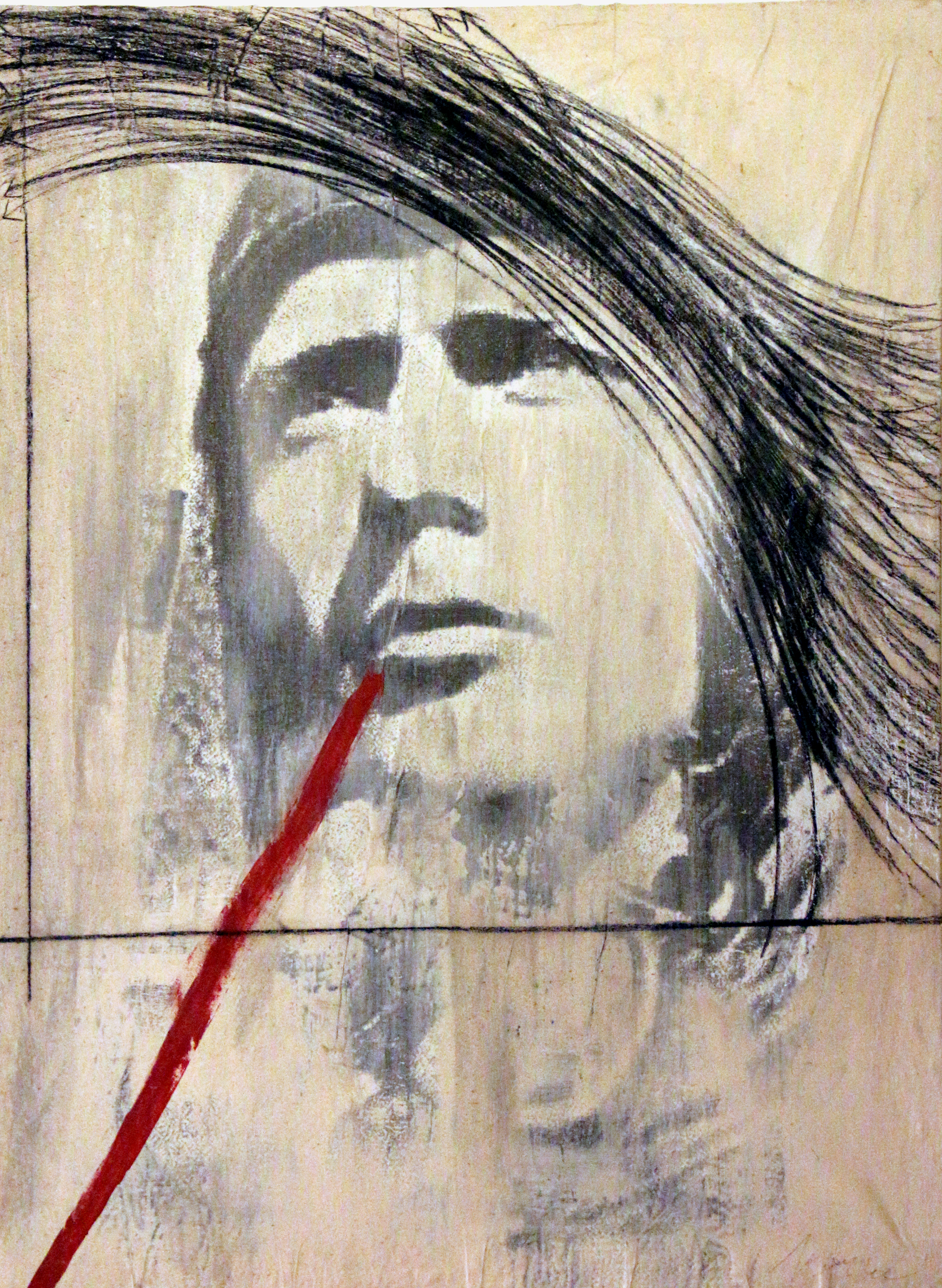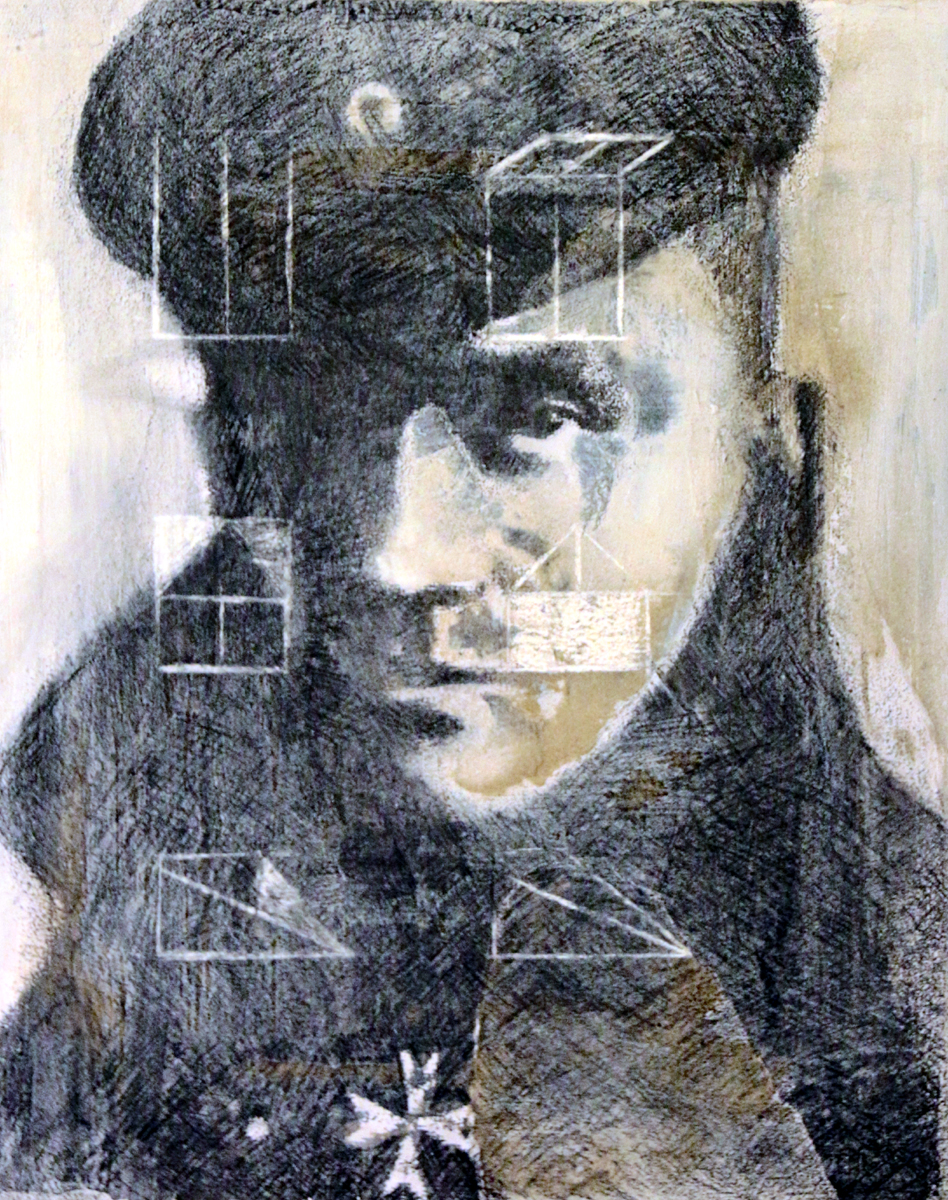FLYING LESSONS
Diptych: two paintings of 90 cm x 110 cm, mixed media on canvas, 2009
Seeping through the opacity of the diptych’s canvases, almost imperceptibly, the faces of two great flight pioneers: German First World War hero Manfred von Richthofen, AKA The Red Baron, and Charles Lindbergh, who manned the first solo non-stop flight across the Atlantic in 1927.
Fly Lesson
The portraits of the two airmen were taken from the emulsions of large format photocopies. They were first rubbed with charcoal and graphite, then matted with sand, glue, chalk and pigments. The faces were then “dirtied” by adding various marks and graphics, which are actually either studies in aerodynamics or directions for how to make a paper airplane. There is also a diagonal stick of red across the figure of Lindbergh, shattering the dominion of cold colours.
Matter and memory
This diptych seems informed by an upward impulse which is not, however, deployed towards the sky. The longing for elevation begins outside the canvas, with the exploits of the pioneers, and leads the viewer slowly to the bottom of a memory, suspended in time, almost mythological, offering an understanding of a sublime reality, which has its own life, and is accessed via the ambiguous gaze of the Red Baron and Lindbergh. In the background of the image, far away, the two airmen wait for someone to notice them and seek out their company, so that their absence may be shared.
Mirror
These same-sized paintings are designed to be exhibited as if they were reflections of one another. The diptych invites the two main characters to dialogue in silence. It is a game that references different but similar memories, in which the concept of the flight takes on the predominant meaning of a separation from overwhelming gravity. Thus, the marks and symbols on the canvases fail in their attempts to force the pioneers to tie geometry to the immanent.





